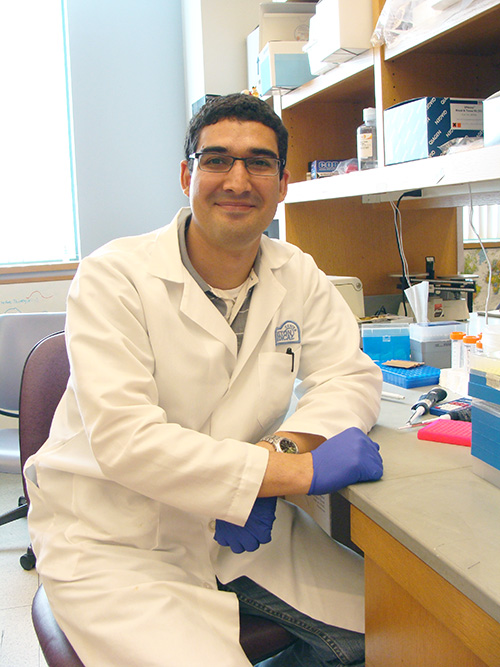 Dr. Luis AgostoamfAR-funded researchers continue to study cells other than CD4+ T cells that may harbor latent HIV. Such cells may pose additional obstacles to an HIV cure. Last month’s update featured amfAR grantee Dr. Paula Cannon and her work on specialized cells in the brain. In a study published online in May in The Journal of Clinical Investigation, amfAR grantee Dr. Luis Agosto and colleagues from Boston University look at possible HIV reservoir cells in the vagina.
Dr. Luis AgostoamfAR-funded researchers continue to study cells other than CD4+ T cells that may harbor latent HIV. Such cells may pose additional obstacles to an HIV cure. Last month’s update featured amfAR grantee Dr. Paula Cannon and her work on specialized cells in the brain. In a study published online in May in The Journal of Clinical Investigation, amfAR grantee Dr. Luis Agosto and colleagues from Boston University look at possible HIV reservoir cells in the vagina.
Agosto and associates obtained vaginal biopsies from five HIV-negative women and two women with HIV who were receiving antiretroviral therapy. First, they documented that a special type of immune cell, known as a vaginal epithelial dendritic cell (VEDC), could be infected with HIV in the test tube. VEDCs are recognized by their shape, a characteristic internal structure on electron microscopy, and specific cell surface proteins.
But their research went further, showing that these cells were much more susceptible to infection by those strains of HIV that utilize a certain cell surface protein—known as CCR5—to enter a cell, rather than an alternative protein receptor, CXCR4. Based on their findings, the authors suggest that VEDCs may be strict “gatekeepers” for infection, selecting which strains of HIV will establish an infection in a woman.
The researchers also examined the possibility that VEDCs could establish a reservoir of latent virus. They found evidence that this may indeed be a possibility by identifying proviral HIV DNA in VEDCs obtained from the two HIV-positive women. By sequencing the DNA, they established that the VEDCs harbored “ancestral” fragments of HIV (the founder virus that established infection) in the women.
The number of such proviruses per VEDC was four- to eight-fold lower than those found in the women’s blood cells, but the amount was still highly significant.
More work needs to be done to definitively conclude that vaginal cells are part of the latent HIV reservoir. It is possible that the VEDCs simply scavenged pieces of latent virus from T cells and could not produce infectious viruses when stimulated—the test of a true latent reservoir.
Dr. Laurence is amfAR’s senior scientific consultant.